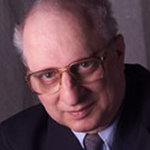April 14, 2015
A Canadian woman's adventures in Israel/Palestine
Carmen Taha Jarrah has a thing about the Holy Land. Her book "Smuggled Stories from the Holy Land" (Mosaic Design Book Publishing, 2015) ends with her off on her third trip there in 2011.
Not that she really enjoys it. In fact when she is there she is constantly on edge, afraid of doing something that calls her presence to the attention of the Israeli Big Brother and his little brother enforcers. Yet she perseveres in finding the truth and in getting where the action is.
Her book addresses the current situation, the victimization of Palestinians in Israel/Palestine.
Yet she does not gloss over the fact that Jews there have also been victims. In 1929, she notes, Jews in Hebron were slaughtered by a Palestinian mob, and in 1948 a convoy including doctors and nurses headed for Hadassah Hospital was attacked and many were killed. The attackers claim that they attacked the armed convoy without knowing who was military and who not, but Jarrah does not go into this detail, simply laying out some bare facts.
The point in our mentioning these incidents is to show that she is not some blind propagandist advocating for one side.
That is past history. Her story is of the situation now as she witnessed it and experienced it. She began her first visit with a group of Arab and Jewish women from Edmonton at Neve Shalom/Wahat al-Salam, a village started by a Catholic priest, a Jewish convert. It is a community dedicated to having Jews and Palestinians living together. But the bad news came thick and fast in her wanderings.
A previous article in the Canadian Charger told of Jeff Halper’s talk in Ottawa about the work of the Israeli Committee against House Demolitions.
Jarrah and her group visited the committee and Salim Shawamreh, whose story Halper told. His family home was demolished several times by Israel, for being built without a permit, permits being next to impossible for Palestinians to obtain. His family no longer stays there, as the repeated demolitions have been too traumatic, especially for the children. The building now serves as Beit Arabiya Peace Centre. That does not save it however, and Israel bulldozed it a couple more times since she visited.
Their visit to Hebron was a depressing affair. A couple thousand Israeli troops are there to “protect” some 800 Jewish settlers who have closed the main market and who harass those Palestinians who have not fled. In some cases, Palestinian families are only able to gain access to their own homes through windows or other makeshift arrangements, the main entrances being barred. Settlers on the upper floors throw filth and garbage down on the Palestinian shops and customers below. Jarrah includes in the book a photo of a protective mesh over a street. The photo shows the detritus captured by the mesh.
Also on their journeys they encounter checkpoints, with long waits for Palestinians to get through, with no toilets, water fountains, or food outlets. The checkpoints are serious handicaps for people needing to get to work, school, or medical visits on the other side. And our visitors frequently found themselves facing the Wall, separation barrier, Apartheid Wall, or whatever other term one wishes to use. It in some cases separates farmers from their land. It divides communities and isolates some homes. As well, it steals Palestinian land.
Jarrah’s second trip turned her into a farmer. She joined with others in helping olive growers bring in their crop. Without the help of international and Israeli volunteers, some farmers would be prevented by settler attacks.
While Jarrah presents many disturbing situations in her book, one of the more disturbing things she encountered was hearing the stories of young people who have been taken prisoner, often in the middle of the night at home, and brutalized by soldiers on suspicion of throwing stones at tanks. Some did and some didn’t, but the treatment was often vicious.
Over all her visits to the Holy Land there hangs a cloud of fear. Will she be arrested for helping the Palestinians? Will her notes and photographs be seized and used as evidence in some punishing encounter? But a similar cloud hangs over Palestinians. Will the soldiers break in in the middle of the night and take them out of the house and demolish it, or move Jews in? Or will they destroy it or burn it? Will they steal all or part of the farmer’s land?
Jarrah is a witness to this condition. In spite of the fear it instills, she is drawn back as if by a magnet.
If you are not able to find the book at your local bookstore, you will have no difficulty locating it on the web.








